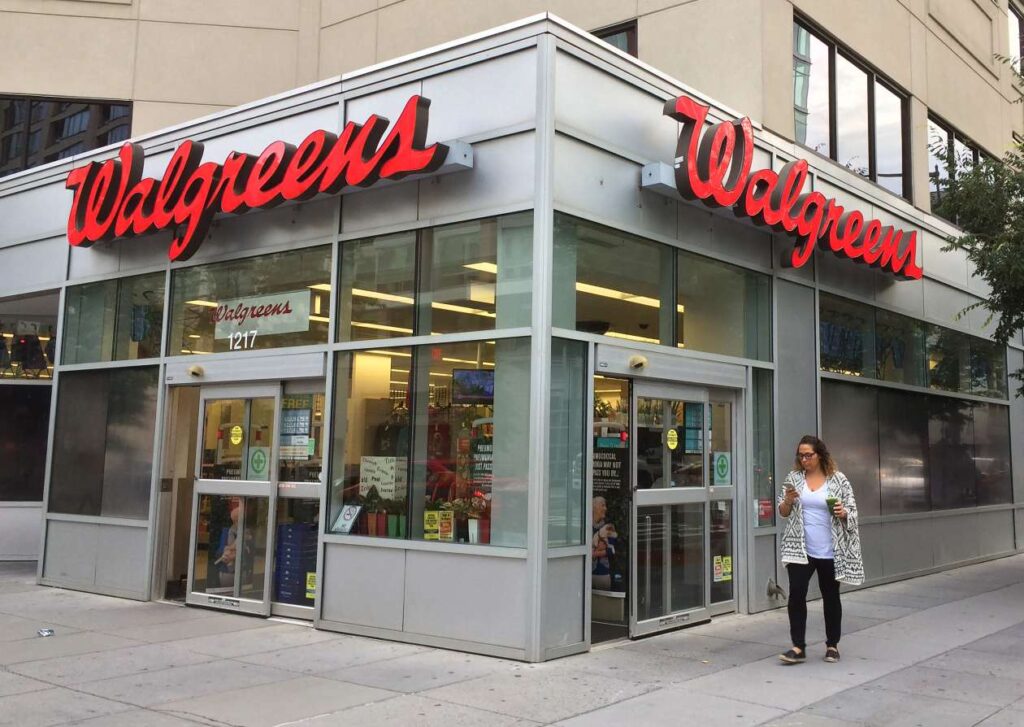Key Points
Walgreens reported fiscal second-quarter earnings and revenue that exceeded expectations, benefiting from cost cuts as the retail drugstore giant prepares to go private.
The company has withdrawn its fiscal 2025 guidance due to the ongoing transaction.
The results reflect a $4.2 billion charge related to a loss in value of its U.S. retail pharmacy and its investment in primary care clinic chain VillageMD.
In this article
WBA
-0.09 (-0.85%)
After Hours
Follow your favorite stocks
CREATE FREE ACCOUNT
Walgreens surpassed expectations with its fiscal second-quarter earnings and revenue on Tuesday, as the company benefitted from cost cuts and prepares for its transition to a private entity.
The company is currently in the process of being acquired by Sycamore Partners in a roughly $10 billion deal expected to close in the fourth quarter of this year. As a result of the pending transaction, Walgreens has withdrawn its fiscal 2025 guidance. Previously, the company had anticipated a full-year adjusted profit of $1.40 to $1.80 per share.
The historic deal marks the end of Walgreens’ long run as a public company, which began in 1927. As the company navigates challenges such as pharmacy reimbursement pressures, weaker consumer spending, and rising competition from its main rival CVS, grocery and retail chains, and Amazon, it is also grappling with a troubled foray into healthcare. To adjust, Walgreens is shutting down stores and cutting costs.
Shares of Walgreens rose nearly 2% in premarket trading on Tuesday.
Here’s how Walgreens performed for the three-month period ending February 28, compared with what Wall Street had expected, based on a survey of analysts by LSEG:
- Earnings per share: 63 cents adjusted vs. 53 cents expected
- Revenue: $38.59 billion vs. $38 billion expected
“Second-quarter results reflect disciplined cost management and improvement in U.S. Healthcare, which were partially offset by weaker front-end results in U.S. Retail Pharmacy, while significant legal settlements resulted in continued negative free cash flow,” Walgreens CEO Tim Wentworth said in a release.
“We remain in the early stages of our turnaround plan, and continue to expect that meaningful value creation will take time, enhanced focus, and balancing future cash needs with necessary investments to navigate a changing pharmacy and retail landscape,” he added.
During the fiscal second quarter, Walgreens reported $38.59 billion in sales, a 4.1% increase from the same period a year ago, as sales grew in its U.S. retail pharmacy business and international segments.
The company posted a net loss of $2.85 billion, or $3.30 per share, for the fiscal second quarter. This compares with a net loss of $5.91 billion, or $6.85 per share, in the same period last year.
Excluding certain items, adjusted earnings were 63 cents per share for the quarter.
The results include a $4.2 billion charge related to a loss in value of its U.S. retail pharmacy and its investment in primary-care clinic chain VillageMD.
However, Walgreens made $1 billion in profit by cashing out early on some of its shares of Cencora, a pharmaceutical solutions organization, and benefiting from gains from its investment in BrightSpring, a provider of home and community-based health services. These are two of Walgreens’ top healthcare investments.
The company’s operating cash flow in the second quarter was impacted by $969 million in legal payments for opioid-related settlements and a dispute with virtual-care company Everly Health Solutions, which alleged that Walgreens broke the terms of a business contract during the COVID-19 pandemic.
Source: F.M.I.E

